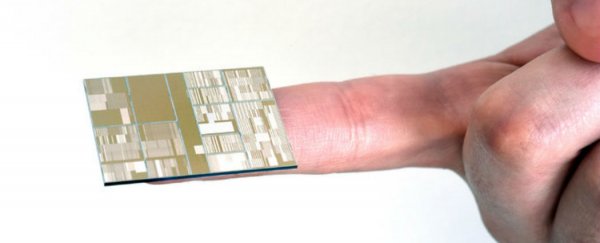IBM has built a working version of a new computer chip, and it says it's the most powerful ever created. At around four times more powerful than today's top-of-the-line technology, it should pave the way for a new generation of super-speedy computers and gadgets in the not-too-distant future.
All this power is made possible by transistors that are just 7 nanometres in size (7 billionths of a metre), created using a special silicon-germanium mixture instead of pure silicon. Today's smallest transistors are 14nm in size, with 10nm versions on the way.
Smaller transistors mean more can be packed into a single chip, which in turn leads to faster smartphones, laptops, and computers. IBM's breakthrough is still a long way from getting into consumer gadgets, but its lab work proves that 7nm transistors are possible.
For a long time, computer technology has followed the path known as Moore's law, named after Intel co-founder Gordon Moore. It states that computing power has the potential to double every two years, and so far, it's held true.
More recently, as computer chips get ever denser and the laws of physics start to restrict further improvements, there's been some doubt within the industry that Moore's law could continue to be applied. But thanks to IBM's work and other projects across the world, it seems there's plenty of life in it yet.
The challenge now is translating what IBM has done in its research lab into a full-scale manufacturing process. As well as replacing silicon with a silicon-germanium alloy, the technique also uses Extreme Ultraviolet (EUV) lithography to etch the microscopic patterns required into each chip. It's an incredibly delicate and detailed process, but the end results are a computer chip that's faster, smaller, and more energy-efficient.
A number of partners have been working with IBM on the technology, including GlobalFoundries, Samsung, and SUNY (the State University of New York). It's part of an overall research push that will cost them $3 billion over the course of five years.
"For business and society to get the most out of tomorrow's computers and devices, scaling to 7nm and beyond is essential," Arvind Krishna of IBM Research told The New York Times, adding that the breakthrough "builds on decades of research that has set the pace for the microelectronics industry".
GlobalFoundries' Gary Patton said the milestone is going to be essential in "helping to address the development challenges central to producing a smaller, faster, more cost-efficient generation of semiconductors". We can't wait to see the results.
